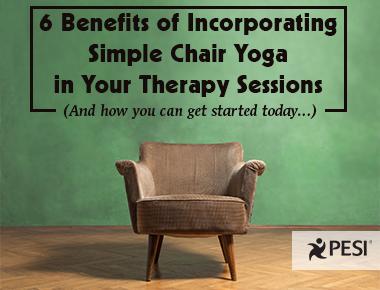6 Benefits of Simple Chair Yoga
And how you can get started today.

Simple chair yoga poses, which can easily be taught in the context of a traditional psychotherapy session, provide a surprising variety of benefits. For example, in the chair version of the half spinal twist, the client slowly twists the torso, beginning at the waist and moving the twist up the spine. He or she completes the pose by turning the neck and head in the same direction as the twist. When the client’s awareness is on the felt experience of the pose, the following benefits can occur:
• Positive body sensations, which encourage curiosity and an attitude of exploration.
• Clarity of mind through the concentration on the body sensations.
• Increased relaxation & reduced anxiety, resulting from the increase and then release of muscular tension.
• Enhanced vitality, made possible by a removal of toxins when the spine is compressed.
• Emotional security gained through contact with supportive surfaces & a release into gravity.
• An enhanced connection between practitioner & client as a result of this positive experience.
The pose can be held as long as it takes for the person to feel grounded, or solid, in the pose and is able to access their internal experience. Anywhere from 30 seconds to several minutes is fine.
This type of intervention can be used anytime in the session when the client feels anxious, tense, ungrounded, or in some pain, or as part of a goal of learning to connect with body sensations.
Therapists don't need to be certified yoga instructors to incorporate simple yoga poses into their work, but they do need to have some prior training from a certified instructor before bringing it into the session. If you haven't had prior yoga training, you can get started today by streaming or downloading my CE Seminar "Bringing Trauma Informed Yoga into Mental Health Practice."
 |
Topic: Yoga
Tags: Breath | Mindfulness




